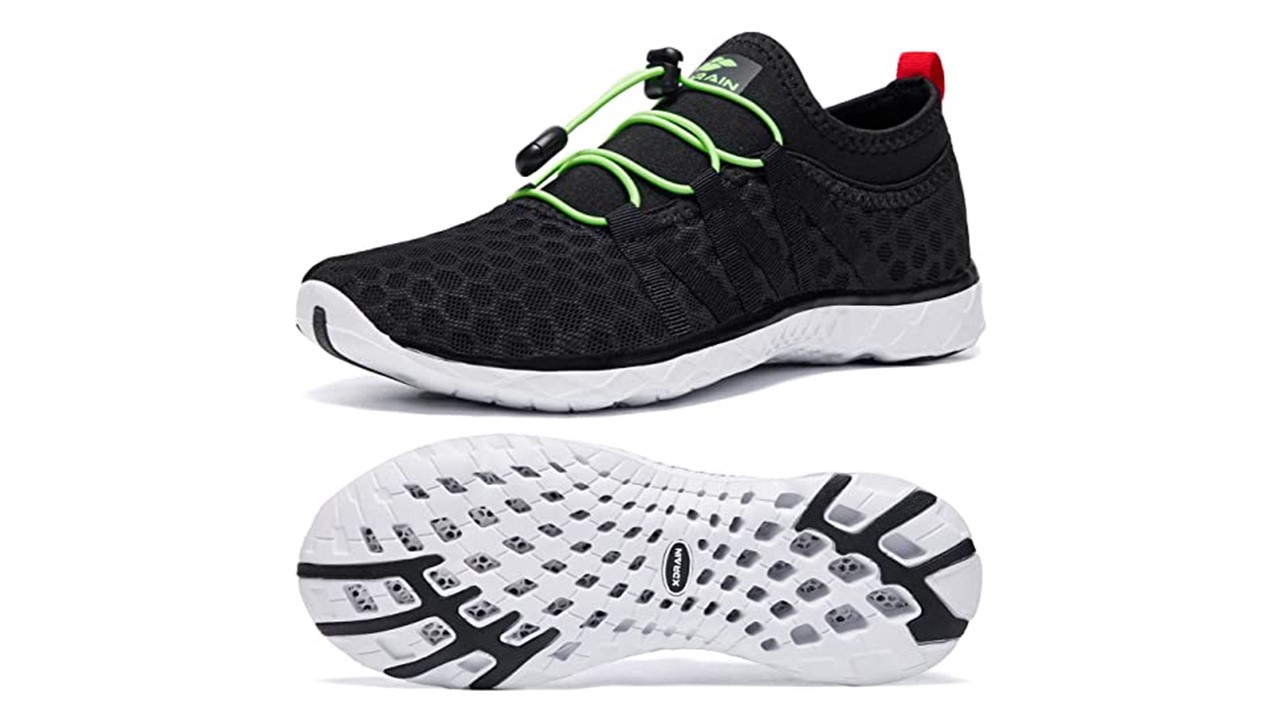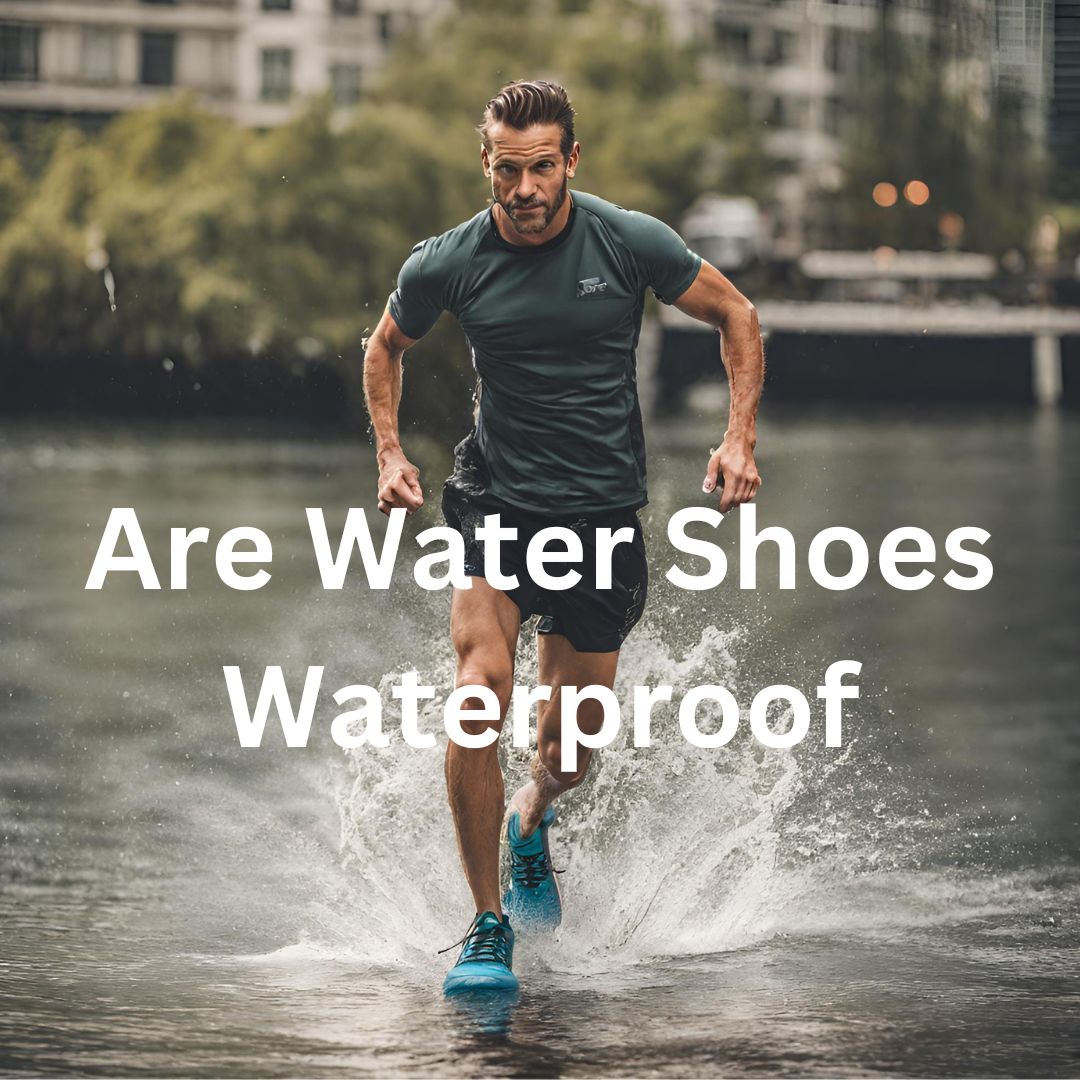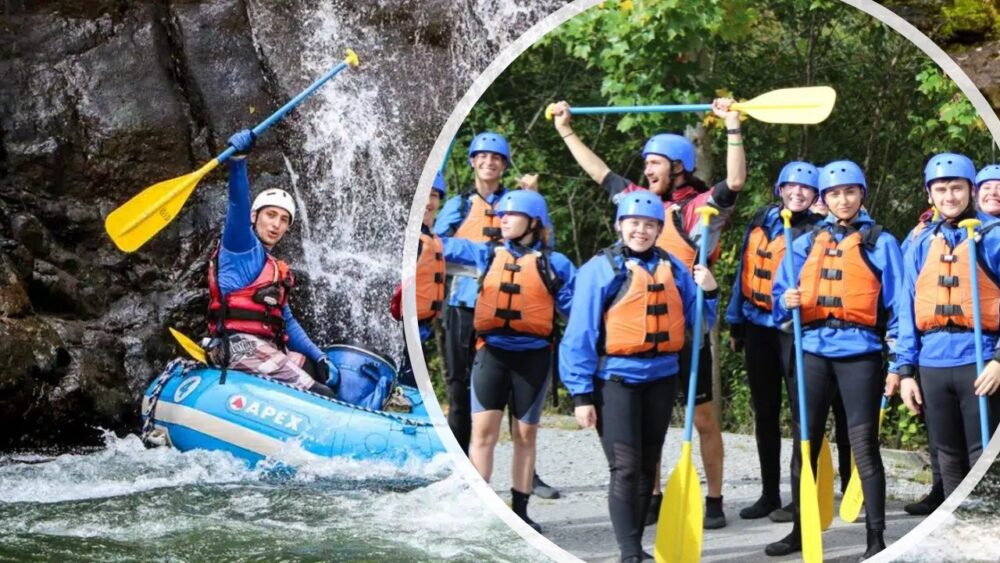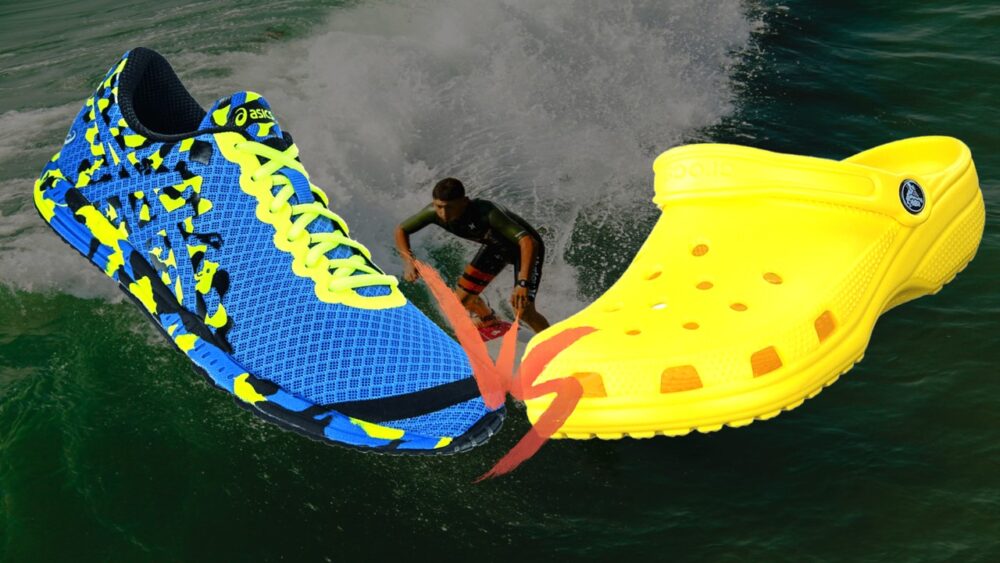What Shoes To Wear White Water Rafting – Essential Gear For Thrilling Adventures
Looking for what shoes to wear white water rafting? When it comes to white water rafting, the right choice of footwear is crucial for a safe and enjoyable experience. Your shoes should provide traction, protection, and comfort in the challenging and unpredictable river environment.
White water rafting demands footwear that can withstand the rigors of fast-flowing rivers, rocky terrain, and wet conditions. The ideal shoes for this activity are water-resistant to keep your feet dry, excellent grip, durability and quick-drying to prevent discomfort.
In this article, we will delve into the different types of shoes suitable for white water rafting, discussing the pros and cons of each. We will provide guidance on how to choose the right shoes based on your needs and preferences and more. Get ready for a thrilling white water rafting adventure!
What Is White Water Rafting? (Knowing What Shoes To Wear White Water Rafting)
White water rafting is an exhilarating outdoor water sport that involves navigating down turbulent rivers or streams in an inflatable raft. It is typically done in a group, with a guide or instructor providing instructions on how to maneuver the raft through various rapids and obstacles.
Research show vacation is good and you should not skip it because of a lot of benefits it offers. And one of the best water sports activities you can involve with on your vacation is white water rafting.
The term “white water” refers to the frothy, turbulent water caused by the swift current and the presence of rocks and obstacles in the river.
Rapids are classified based on their difficulty, ranging from Class I (easy) to Class VI (extremely difficult and dangerous). White water rafting often takes place in rivers with Class II to Class IV rapids, providing an exciting and challenging experience while still maintaining a reasonable level of safety.
Participants wear safety gear, including helmets and personal flotation devices (PFDs), to ensure their safety in case of a capsizing or falling out of the raft. Rafting trips can range from a couple of hours to multi-day expeditions, depending on the river and the desired level of adventure.
White water rafting is not only a thrilling adventure but also a way to experience the beauty of nature and the outdoors. It is also important to know what shoes to wear white water rafting plus other gears.
The adventure requires teamwork, communication, and physical exertion, making it a popular activity for recreational enthusiasts, thrill-seekers, and those looking to explore and connect with natural waterways.
It’s important to note that white water rafting can be a physically demanding activity and may carry inherent risks. It is recommended to undertake rafting trips with experienced guides or outfitters who prioritize safety and provide proper instruction and equipment.
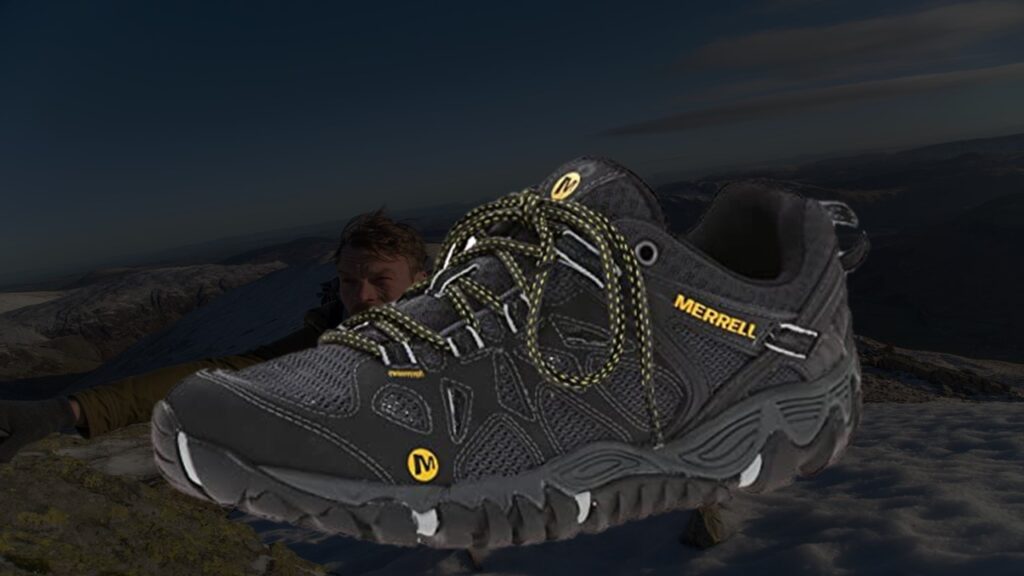
What Shoes To Wear White Water Rafting
When it comes to choosing the right shoes for white water rafting, there are several factors to consider. And knowing what shoes to wear white water rafting is vital. Here are some guidelines to help you make an informed decision:
1. Closed-Toe Water Shoes
Closed-toe water shoes are a popular choice for white water rafting as they provide protection, traction, and quick drying. Look for shoes made of water-resistant materials such as neoprene, mesh, or synthetic fabrics.
These shoes should have a sturdy construction and reinforced toe caps to shield your feet from rocks, branches, and other potential hazards.
2. Secure Fit
It’s essential to choose shoes that fit securely and snugly on your feet. Look for shoes with adjustable straps, laces, or a combination of both to ensure a customized fit. This prevents your shoes from coming off during turbulent rapids and provides stability while navigating the water.
3. Good Traction
Opt for shoes with a reliable traction system to prevent slipping on wet and slippery surfaces. The outsoles should have lugs or multidirectional treads that offer excellent grip on rocks and riverbeds. Rubber compounds designed for wet conditions can further enhance traction.
4. Quick Drying and Drainage
Since you’ll be in and out of the water during white water rafting, choose shoes that dry quickly to avoid discomfort and blisters. Look for shoes with mesh panels, drain holes, or perforated soles that allow water to escape, ensuring your shoes don’t become waterlogged.
5. Comfort and Support
Prioritize comfort and support for long hours on the water. Cushioning, arch support, and a well-padded footbed contribute to overall comfort. Shoes with a contoured midsole or built-in arch support can help reduce fatigue and provide stability.
6. Lightweight and Flexible
White water rafting requires agility and flexibility, so choose shoes that are lightweight and flexible. Bulky or heavy shoes can hinder your movements and make it harder to maneuver on the raft.
7. Consider the Water Temperature
If you’re rafting in colder waters, you may want to consider neoprene booties or wet shoes with thicker insulation to keep your feet warm. In warmer temperatures, breathable shoes with ample ventilation will help keep your feet cool and comfortable.
Remember, it’s crucial to prioritize safety and choose appropriate footwear that suits your specific needs and the conditions of your white water rafting adventure. Consult with professionals or guides if you’re unsure about the specific requirements of the location or tour you’ll be participating in.
RELATED: What Pants To Wear White Water Rafting – The Ultimate Guide
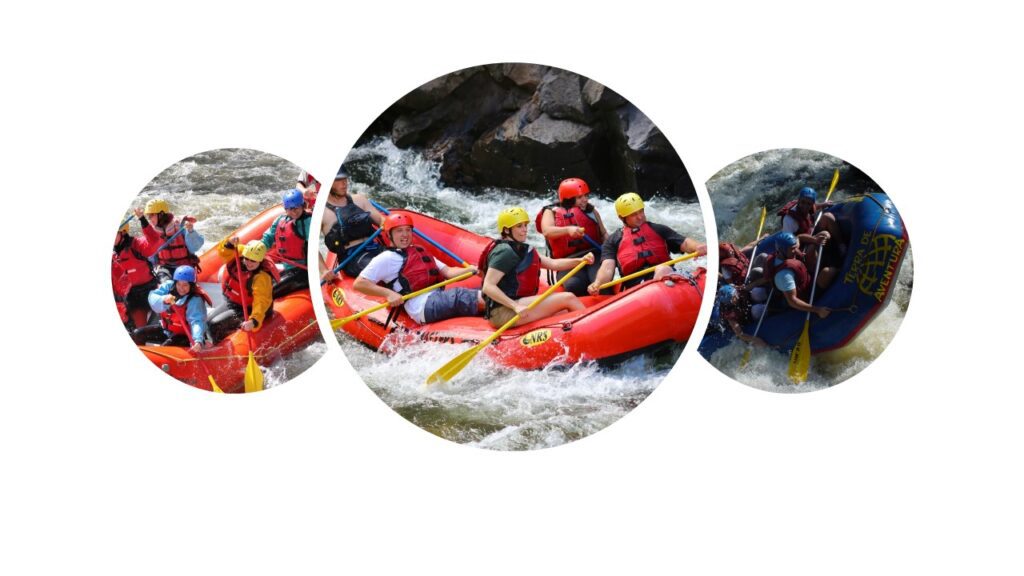
The Best Shoes For White Water Rafting (What Shoes To Wear White Water Rafting)
Here’s an expanded breakdown of the different types of shoes suitable for white water rafting, their pros and cons, how to choose the right shoes, tips for keeping your feet comfortable and protected, and a mention of some highly rated white water rafting shoes on the market:
1. Water Shoes
– Pros: Water shoes are designed specifically for water activities, providing excellent drainage, quick drying, and good traction. They offer protection and flexibility, allowing for easy movement.
– Cons: Some water shoes may lack durability and sturdy support compared to other options.
2. Amphibious Sandals
– Pros: Amphibious sandals offer a balance between protection and breathability. They are lightweight, quick-drying, and provide good traction. They often feature adjustable straps for a secure fit.
– Cons: Amphibious sandals may not provide as much toe protection as closed-toe shoes, and they can accumulate debris or pebbles inside.
3. Closed-Toe Water Shoes
– Pros: Closed-toe water shoes offer enhanced protection for your toes and feet. They typically have durable construction, good traction, and quick-drying properties. They can provide more stability and support.
– Cons: Closed-toe water shoes may not be as breathable as sandals, and some designs can take longer to dry.
4. Neoprene Booties
– Pros: Neoprene booties provide insulation in colder water conditions, keeping your feet warm. They offer a snug fit, protection, and good traction. They can be worn with or without socks.
– Cons: Neoprene booties may not be as versatile as other options and may not provide as much protection for rugged environments.
When choosing the right shoes for your needs, consider the following factors:
– Water resistance: Look for materials that repel water and dry quickly.
– Traction: Ensure the shoes have a reliable grip on wet surfaces.
– Protection: Consider the level of toe protection and overall durability.
– Fit and comfort: Choose shoes that fit securely and provide sufficient cushioning and support.
– Breathability: If rafting in warm climates, prioritize shoes with good ventilation.
– Activity-specific features: Assess the specific requirements of your rafting adventure and choose shoes accordingly.
To keep your feet comfortable and protected while rafting:
– Wear moisture-wicking socks to prevent blisters and discomfort.
– Use neoprene socks or thermal liners for insulation in colder conditions.
– Ditch cotton socks for water activities, as they retain moisture and can lead to blisters.
– Regularly check your shoes for wear and tear, ensuring they maintain their functionality.
RELATED: Can You Wear Water Shoes At Great Wolf Lodge
The Best Shoes To Wear White Rafting (Knowing What Shoes To Wear White Water Rafting)
Knowing what shoes to wear white water rafting is is important and you need those top quality shoes. Here are a few best shoes for rafting and hiking too:
1. Astral Brewer 2.0 (Astral Rafting Shoes)
The Astral Brewer 2.0 is a versatile water shoe known for its excellent grip and traction on wet surfaces. It features a lightweight design, quick-drying properties, and comfortable cushioning. The shoe is praised for its durability and ability to withstand rugged conditions.
2. Chaco Outcross Evo 2
The Chaco Outcross Evo 2 is an amphibious sandal that combines the breathability of a sandal with the protection of a shoe. It offers adjustable straps, a supportive footbed and a grippy outsole. Users appreciate its durability, comfortable fit, and versatility for both water and land activities.
3. Keen Newport H2
The Keen Newport H2 is a closed-toe water shoe that provides toe protection, stability, and durability. It features a secure fit with an adjustable strap system, quick-drying materials, and a rubber outsole for reliable traction.
Many users find them comfortable for extended periods and appreciate their durability.
4. NRS Boundary Shoe
The NRS Boundary Shoe is a neoprene bootie designed for cold water rafting. It offers insulation, a secure fit, and excellent traction. The bootie is praised for its warmth and ability to keep feet comfortable in colder conditions.
5. Merrell All Out Blaze Sieve
The Merrell All Out Blaze Sieve is a hybrid water shoe and hiking sandal that provides a balance of protection and breathability. It features a closed-toe design, quick-drying materials, and a Vibram outsole for traction. Users appreciate its versatility and comfort for both water and hiking activities.
Remember, the shoes are perfect for men and are also best women’s shoes for white water rafting.
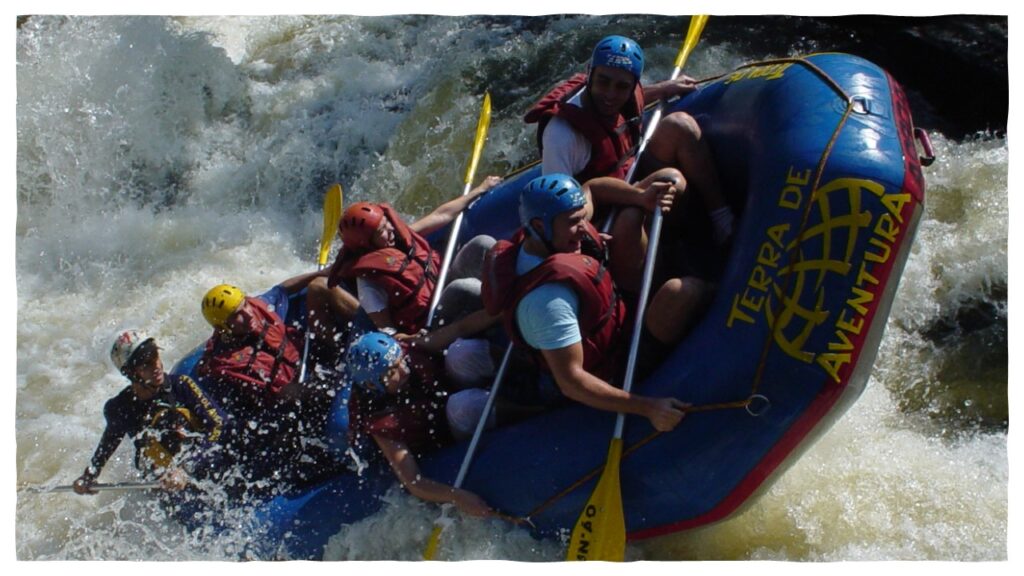
Tips For Keeping Your Feet Comfortable And Protected While Rafting (Knowing What Shoes To Wear White Water Rafting)
Though knowing what shoes to wear white water rafting is essential, keeping your feet comfortable and protected during white water rafting is also important. Consider the following tips while rafting:
1. Wear Proper Footwear: Choose appropriate footwear that provides protection, traction, and quick drying. Opt for water shoes, closed-toe water shoes, or neoprene booties specifically designed for water activities. Ensure they fit well and offer the necessary support and stability.
2. Wear Moisture-Wicking Socks: Invest in moisture-wicking socks made of synthetic materials like nylon or polyester. Avoid cotton socks, as they retain moisture and can cause blisters. Moisture-wicking socks will help keep your feet dry and reduce the risk of discomfort.
3. Apply Foot Powder: Before putting on your socks, apply foot powder to help absorb moisture and reduce friction. This can help prevent blisters and keep your feet more comfortable during the rafting trip.
4. Secure Footwear Properly: Make sure your footwear is securely fastened, whether it’s straps, laces, or a combination of both. This will prevent your shoes from coming off in turbulent water or when walking on uneven terrain.
5. Protect Your Feet from Sunburn: Apply sunscreen to your feet to protect them from sunburn, especially if you’ll be rafting in sunny conditions. Don’t forget to cover the tops of your feet as well.
6. Take Breaks and Remove Wet Shoes: Whenever possible, take breaks from rafting to allow your feet to air out and dry. If your shoes get soaked, take them off during breaks to let your feet breathe and prevent prolonged moisture exposure.
7. Check for Blisters and Hot Spots: Regularly check your feet for any signs of blisters or hot spots during breaks. If you notice any discomfort or irritation, address it promptly by applying moleskin or blister pads to prevent further rubbing and discomfort.
8. Maintain Proper Hydration: Stay hydrated throughout the rafting trip to prevent muscle cramps and swelling in your feet. Proper hydration with reusable water bottles contributes to overall comfort and well-being during physical activities.
9. Keep an Extra Pair of Dry Socks: If possible, bring an extra pair of dry socks with you. Changing into dry socks during breaks can provide instant relief and help keep your feet comfortable.
10. Listen to Your Feet: Pay attention to any discomfort, pain, or signs of injury in your feet. If you experience persistent discomfort or notice any unusual symptoms, it’s important to address them and seek appropriate medical attention if needed.
Tips On How To Properly Maintain And Care For Rafting Shoes (Knowing What Shoes To Wear White Water Rafting)
While knowing what shoes to wear white water rafting is essential, proper maintenance and care of your rafting shoes are essential to ensure their longevity and performance. Here are some tips to help you maintain and care for your shoes:
1. Cleaning
After each rafting trip, rinse your shoes with clean water to remove any dirt, sand, or debris. Use a soft brush or cloth to gently scrub away stubborn stains. Avoid using harsh detergents or solvents as they may damage the materials. If needed, you can use a mild soap specifically formulated for outdoor gear.
2. Drying
Thoroughly dry your shoes before storing them. Remove any insoles or inserts and allow them to air dry in a well-ventilated area away from direct sunlight or heat sources.
Stuffing the shoes with crumpled newspaper or using a shoe tree can help absorb moisture and maintain their shape. Ensure they are completely dry to prevent the growth of mold or unpleasant odors.
3. Storing
Store your shoes in a cool, dry place away from excessive heat or humidity. Avoid storing them in airtight containers, as this can trap moisture and lead to the development of mold or mildew. If possible, store them in a breathable bag or shoe organizer that allows air circulation.
4. Checking for Wear and Tear
Regularly inspect your shoes for any signs of wear and tear. Check the soles for excessive wear, damaged treads, or separation from the upper. Look for any tears, loose stitching, or signs of deterioration in the materials.
If you notice significant damage or weakening of the shoes, consider repairing them if possible or replacing them to ensure your safety during future rafting trips.
5. Reapplying Water Repellent
If your shoes have a water repellent coating, they may wear off over time. Depending on the manufacturer’s recommendations, you can reapply a suitable water repellent spray to restore the water-resistant properties of the shoes.
Follow the instructions provided with the product for the best results.
6. Regular Maintenance
Beyond cleaning and drying, periodically inspect and maintain other parts of your shoes. Check and tighten any straps, buckles, or laces to ensure a secure fit. Treat leather components with appropriate conditioning products to maintain their suppleness and prevent cracking.
Safety Reminders For White Water Rafting (What Shoes To Wear White Water Rafting)
While white water rafting offers an exhilarating adventure, it is essential to prioritize safety throughout the experience. And knowing what shoes to wear white water rafting is essential. Here are some important safety reminders to keep in mind:
1. Check the Weather: Before embarking on a rafting trip, always check the weather forecast. Avoid rafting during severe weather conditions, such as heavy rainstorms or thunderstorms, as they can significantly impact water levels and create dangerous situations.
2. Wear Appropriate Safety Equipment: Ensure that you and your fellow rafters wear personal flotation devices (PFDs) or life jackets at all times during the rafting excursion. PFDs provide buoyancy and can be lifesaving in the event of an accident or unexpected immersion in water.
3. Follow Professional Guides: If you are a beginner or unfamiliar with the river, it is highly recommended to go rafting with professional guides.
They possess the necessary knowledge, experience, and expertise to navigate the river safely. Listen carefully to their instructions and follow their guidance throughout the trip.
4. Communicate and Stay Together: Maintain clear communication with your fellow rafters and guide. Establish signals or verbal cues to ensure effective communication, especially during challenging rapids. Stay together as a group and avoid straying too far apart to enhance safety and coordination.
5. Be Aware of River Hazards: Familiarize yourself with potential river hazards such as rocks, fallen trees, or other obstacles. Keep an eye out for these hazards and navigate around them carefully. Always be prepared for unexpected changes in the river’s flow and depth.
6. Learn Basic Rescue Techniques: It is beneficial to have a basic understanding of rescue techniques such as self-rescue and assisting others in case of emergencies. Consider taking a rafting safety course or receiving instruction from experienced guides to acquire these essential skills.
7. Stay Hydrated and Protected: Bring plenty of water to stay hydrated during the rafting trip, especially on hot days. Apply sunscreen to protect your skin from harmful UV rays, wear a hat, and consider wearing sunglasses to shield your eyes from the sun’s glare.
Remember, safety should always be the top priority when participating in white water rafting. By being prepared, wearing appropriate safety equipment, following the instructions of professional guides, and staying alert to potential hazards, you can enjoy a thrilling and safe rafting experience.
River Rafting Dress Code / What To Wear Rafting In Summer
When it comes to river rafting, there is no strict dress code, but it’s important to wear appropriate clothing that ensures comfort, protection, and safety throughout your adventure. Here are some guidelines for a suitable dress code for river rafting:
- Swimwear or Quick-Drying Clothing: Opt for swimwear or quick-drying clothing that allows freedom of movement and doesn’t retain water. Avoid cotton clothing as it takes longer to dry and can leave you feeling cold and uncomfortable.
- Rash Guard or T-Shirt: Wear a lightweight, moisture-wicking rash guard or a comfortable, quick-drying T-shirt to protect your skin from the sun’s harmful UV rays and potential abrasions.
- Board Shorts or Synthetic Shorts: Choose board shorts or synthetic shorts that provide comfort and unrestricted movement. Avoid wearing jeans or heavy fabrics that can become waterlogged and cumbersome.
- Water Shoes or Secure Footwear: Wear water shoes or sandals with a secure fit to protect your feet from rocks, sharp objects, or potential slips. Avoid flip-flops or barefoot rafting, as they offer little protection and can be hazardous.
- Hat and Sunglasses: Wear a hat with a brim to shield your face from the sun and sunglasses with UV protection to protect your eyes from glare and potential debris.
- Personal Flotation Device (PFD): Always wear a properly fitted personal flotation device (PFD) or life jacket that meets safety regulations. It is a crucial part of the dress code for river rafting and ensures your safety in case of unexpected emergencies.
Remember, the dress code may vary depending on factors such as weather conditions, water temperature, and the intensity of the rafting trip. It’s essential to consider these factors and dress accordingly to ensure your comfort, protection, and enjoyment while river rafting.
The Bottom Line On What Shoes To Wear White Water Rafting
What Shoes To Wear White Water Rafting? Don’t let your white water rafting experience be hindered by unsuitable footwear. Choose the right shoes that provide traction, durability, and comfort to enhance your safety and enjoyment on the water.
With the proper shoes, you’ll navigate the rapids with confidence and have a thrilling adventure like never before. Get ready to make a splash and conquer the rivers in style. Start your white water rafting journey today with the perfect pair of shoes!
